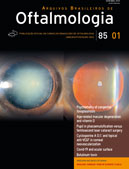Purpose: This study aimed to compare the changes in the lacrimal functional unit in the following two models of neurogenic dry eye syndrome: sensory denervation of the cornea versus autonomic denervation of the lacrimal gland.
Methods: The neural network supports the lacrimal functional unit. It can be divided into afferent (sensory) and efferent (autonomic) pathways and is affected by severe diseases that compromise the lacrimal functional unit. Male Wistar, 8-week-old rats were divided into the following three groups: 1) control naïve (n=16 animals); 2) autonomic denervation: where rats were subjected to right lacrimal gland nerve ablation and evaluated after 1 and 2 months (1M and 2M) after the procedure (n=7 animals per subgroup, autonomic denervation 1M and autonomic denervation 2M, respectively); 3) sensory denervation induced by 0.2% benzalkonium chloride eye drops, twice a day for 7 days in the right eye (n=10 animals). The corneal sensitivity was measured using the eye wipe test with capsaicin (10 μM). The quantitative real-time PCR was performed to compare the mRNA expressions of proinflammatory cytokines, such as Il-1β, Il-6, Tnf, Mmp9, in the cornea, trigeminal ganglion, and lacrimal gland. In addition, the mRNA of the promitotic factors in the lacrimal gland, such as Bmp7, Runx1, Runx3, Fgf10, and Smad1, was compared.
Results: Sensory denervation induced corneal hyperalgesia (p=0.001). Sensory denervation and autonomic denervation increased the mRNA of proinflammatory cytokines in the cornea and lacrimal gland (p<0.05), but only sensory denervation increased the mRNA levels of Il-1β and Tnf in the trigeminal ganglion (p<0.05) compared with the control naïve.
Conclusions: Autonomic denervation and sensory denervation models can have common features, such as inflammation of different parts of the lacrimal functional unit. However, hyperesthesia and inflammatory markers in the trigeminal ganglion because of sensory denervation and the expression of regenerative mediators in the lacrimal gland owing to autonomic denervation are the distinguishing features of these diseases that can be explored in future studies assessing dry eye syndrome secondary to neural damage of the lacrimal functional unit.
Keywords: Cornea; Lacrimal functional unit; Lacrimal apparatus; Hypersensitivity; Wistar rats; Dry eye syndrome
